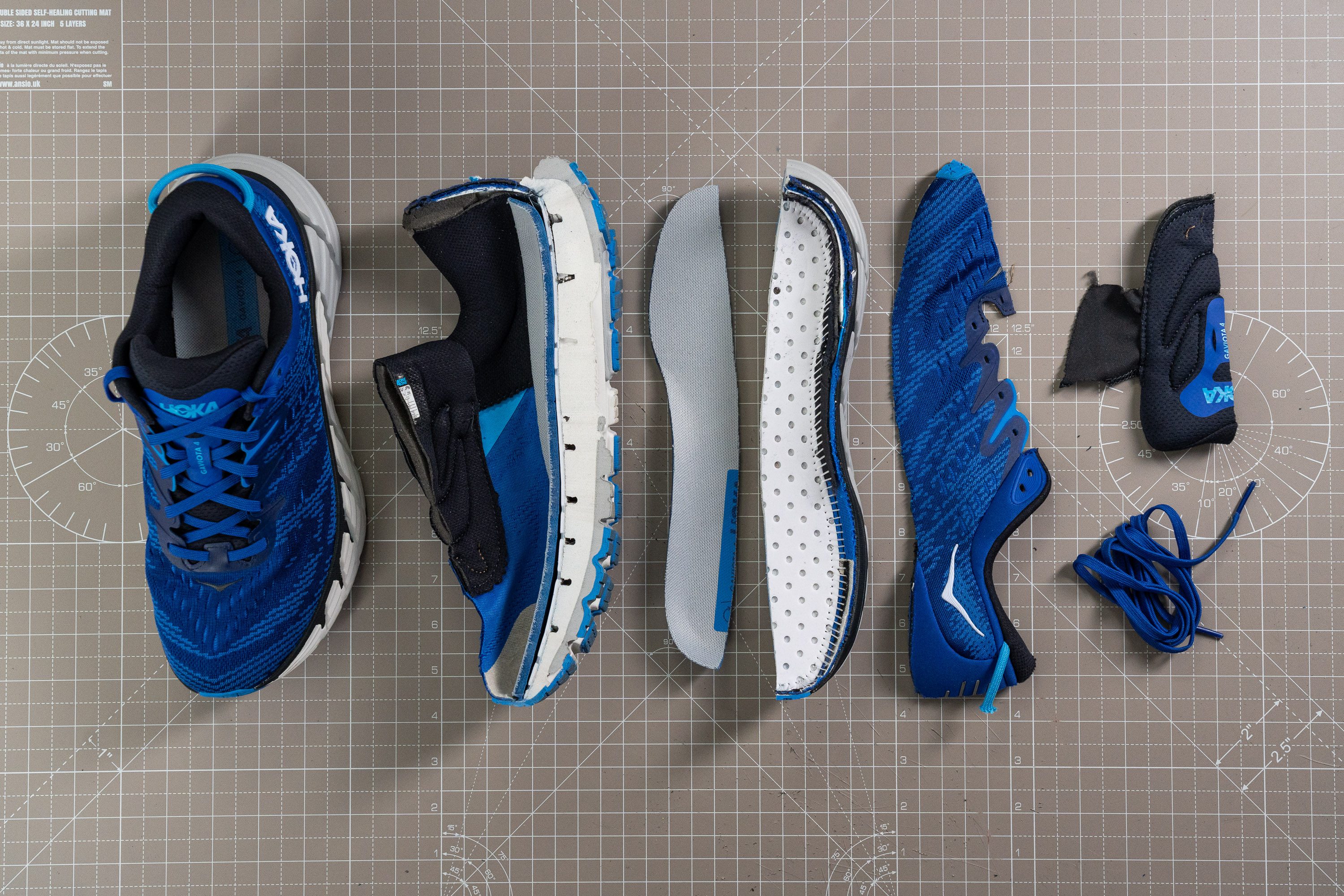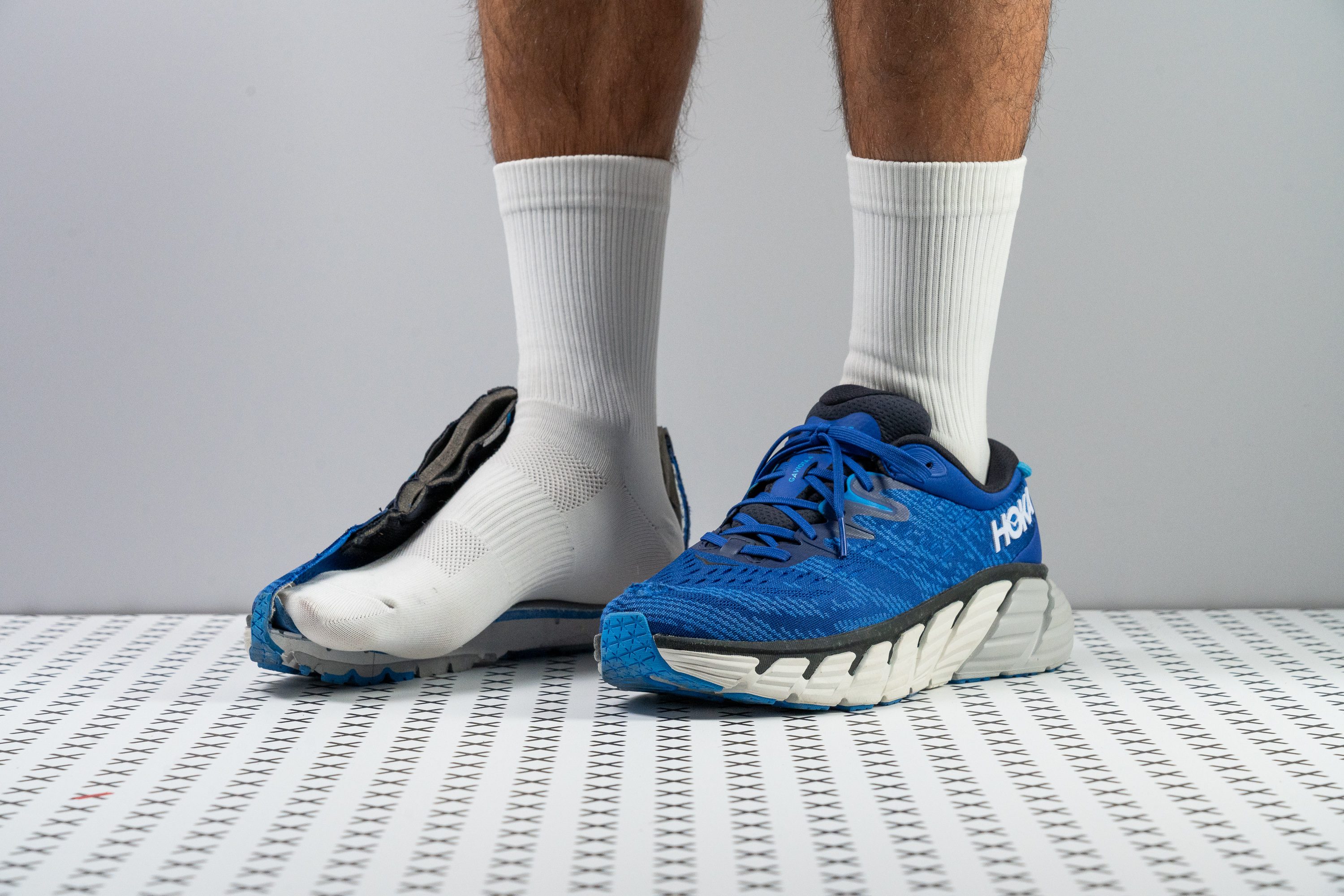Our verdict
Pros
- Superior comfort
- Incredibly protective underfoot
- Very smooth ride
- Plenty of stability
- Breathable mesh
- Easy, effective lacing
- Great for long-distances
- Durable outsole
- Double as a walker
Cons
- Requires some breaking-in
- A bit expensive
- Heavy
Audience verdict
Comparison
The most similar running shoes compared
+ + Add a shoe | |||||
|---|---|---|---|---|---|
| Audience score | 86 Good! | 88 Great! | 83 Good! | 85 Good! | |
| Price | $170 | $170 | $175 | $140 | |
| Pace | Daily running | Daily running | Daily running | Daily running | |
| Shock absorption | - | - | Moderate | - | |
| Energy return | - | - | Low | - | |
| Traction | - | - | High | - | |
| Arch support | Stability | Stability | Stability | Stability | |
| Weight lab Weight brand | 11.4 oz / 324g 11.4 oz / 324g | 11.6 oz / 329g 11.8 oz / 334g | 10.5 oz / 299g 10.9 oz / 310g | 12.5 oz / 353g 12.2 oz / 346g | |
| Drop lab Drop brand | 6.5 mm 5.0 mm | 7.2 mm 8.0 mm | 2.2 mm 6.0 mm | 12.1 mm 12.0 mm | |
| Strike pattern | Mid/forefoot | HeelMid/forefoot | Mid/forefoot | Heel | |
| Size | Slightly small | Slightly small | True to size | Slightly small | |
| Midsole softness | Balanced | Balanced | Soft | Firm | |
| Difference in midsole softness in cold | Normal | Normal | Big | Small | |
| Toebox durability | Decent | Decent | Decent | Decent | |
| Heel padding durability | Bad | Bad | Bad | Good | |
| Outsole durability | - | Good | Good | Good | |
| Breathability | Moderate | Moderate | Breathable | Moderate | |
| Width / fit | Narrow | Medium | Wide | Medium | |
| Toebox width | Medium | Wide | Wide | Medium | |
| Stiffness | Stiff | Stiff | Stiff | Stiff | |
| Torsional rigidity | Stiff | Stiff | Stiff | Stiff | |
| Heel counter stiffness | Stiff | Stiff | Moderate | Moderate | |
| Heel lab Heel brand | 36.6 mm 40.0 mm | 39.1 mm 41.0 mm | 34.9 mm 36.0 mm | 36.5 mm 36.0 mm | |
| Forefoot lab Forefoot brand | 30.1 mm 35.0 mm | 31.9 mm 33.0 mm | 32.7 mm 30.0 mm | 24.4 mm 24.0 mm | |
| Widths available | NormalWide | NormalWide | NormalWide | NarrowNormalWideX-Wide | |
| Orthotic friendly | ✓ | ✓ | ✓ | ✓ | |
| Season | All seasons | All seasons | SummerAll seasons | All seasons | |
| Removable insole | ✓ | ✓ | ✓ | ✓ | |
| Ranking | #385 Bottom 41% | #134 Top 36% | #257 Bottom 31% | #220 Bottom 41% | |
| Popularity | #293 Top 45% | #280 Bottom 24% | #19 Top 6% | #187 Bottom 49% |
Size and fit
Size
Hoka Gaviota 4 fits slightly small (11 votes).
Who should buy the HOKA Gaviota 4
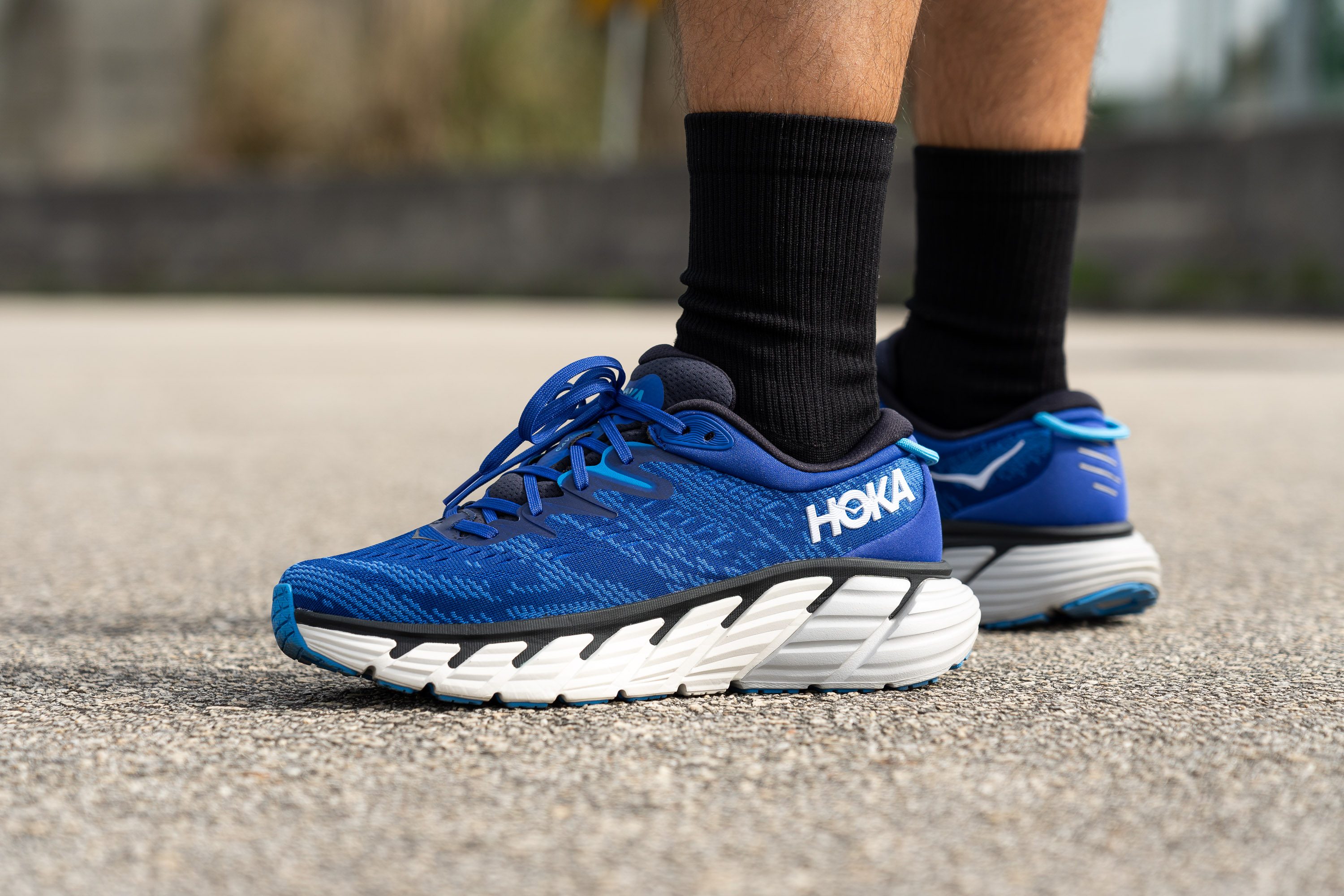
Get this shoe if you suffer from overpronation, love big running shoes, and need plenty of cushioning. We think it’s great as a marathon or ultramarathon training option but works pretty well for casual running too. Besides, we believe it will please heavy runners looking for a lot of protection from the ground.
Who should not buy it
In our opinion, you must look elsewhere if you:
- need a lighter stability shoe. The HOKA Arahi 6 is a better choice, in that case;
- want a less expensive shoe. Consider the Brooks Glycerin GTS 20;
- need a neutral shoe that’s ready out of the box. Have a look at the HOKA Bondi 8 instead.
For the long haul
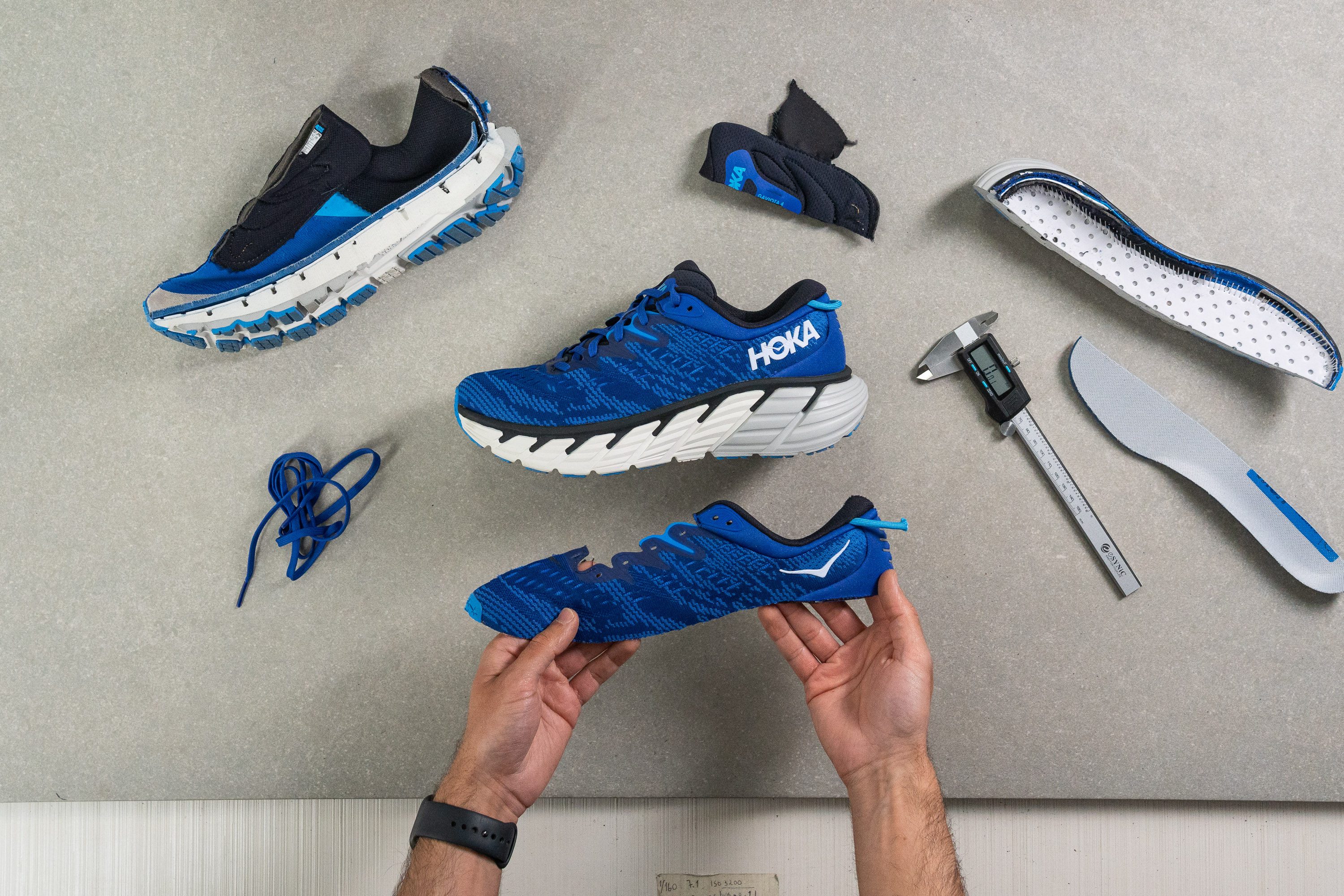
While a great companion for easy training and recovery days, the Gaviota 4, is also ideal for runners who want to go far.
It's no surprise, considering the shoe's name originates from the Spanish word for "Seagull"—a bird celebrated for its stable flight and exceptional longitudinal stability. However, don't mess this bird with the one in Hoka's logo, which represents the Manutara, a culturally significant bird for the Rapa Nui people.
HOKA Gaviota 4 keeps your feet cool
Hoka has aced the breathability game with this shoe, earning an impressive 4 out of 5 rating! It even surpasses the ultra-light Clifton 9, which scored a mere 3 out of 5.
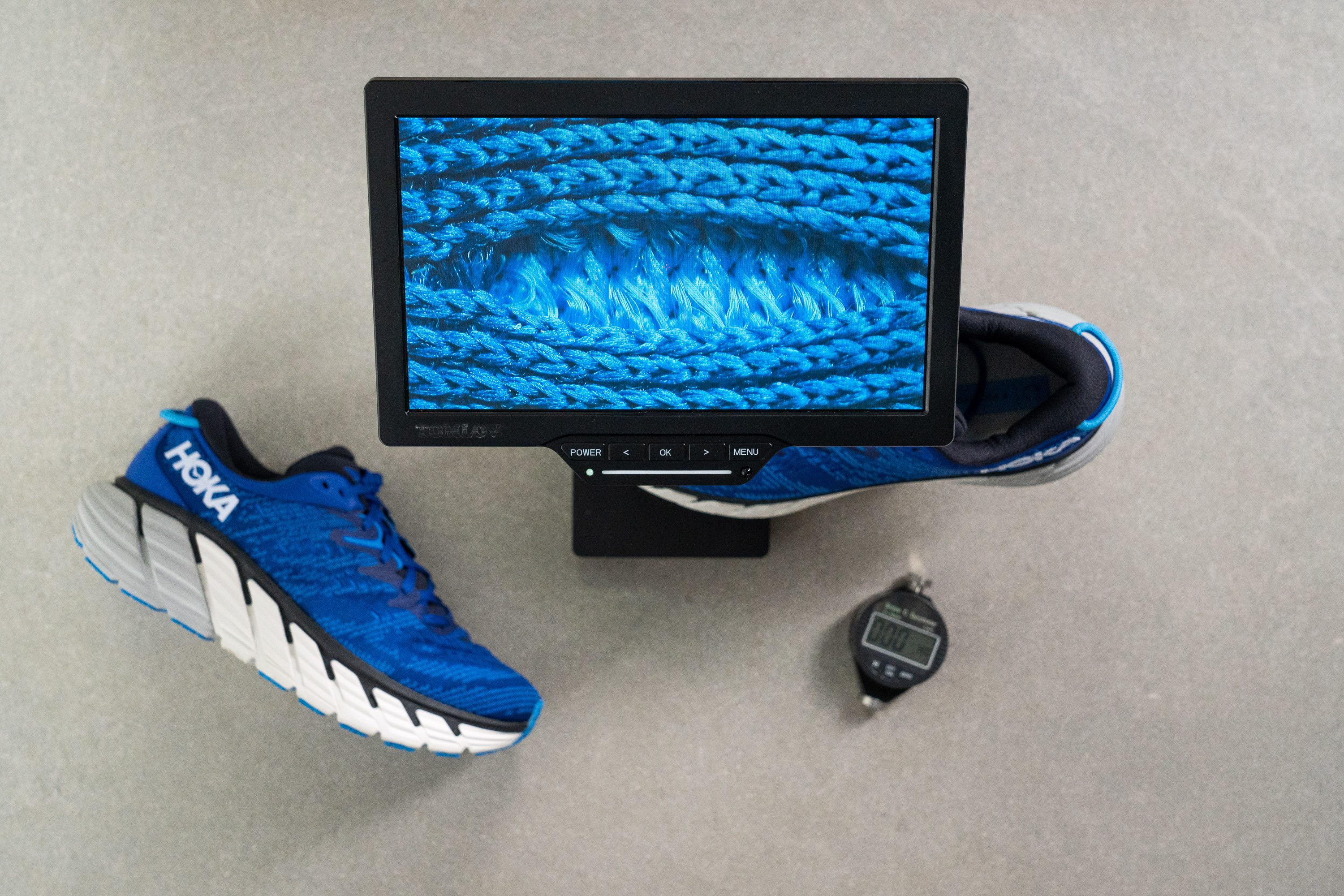
It's amazing that the shoe nailed the breathability aspect given how thick the engineered mesh is in this shoe. But every year we are getting more and more thick-but-airy shoes that impress us!
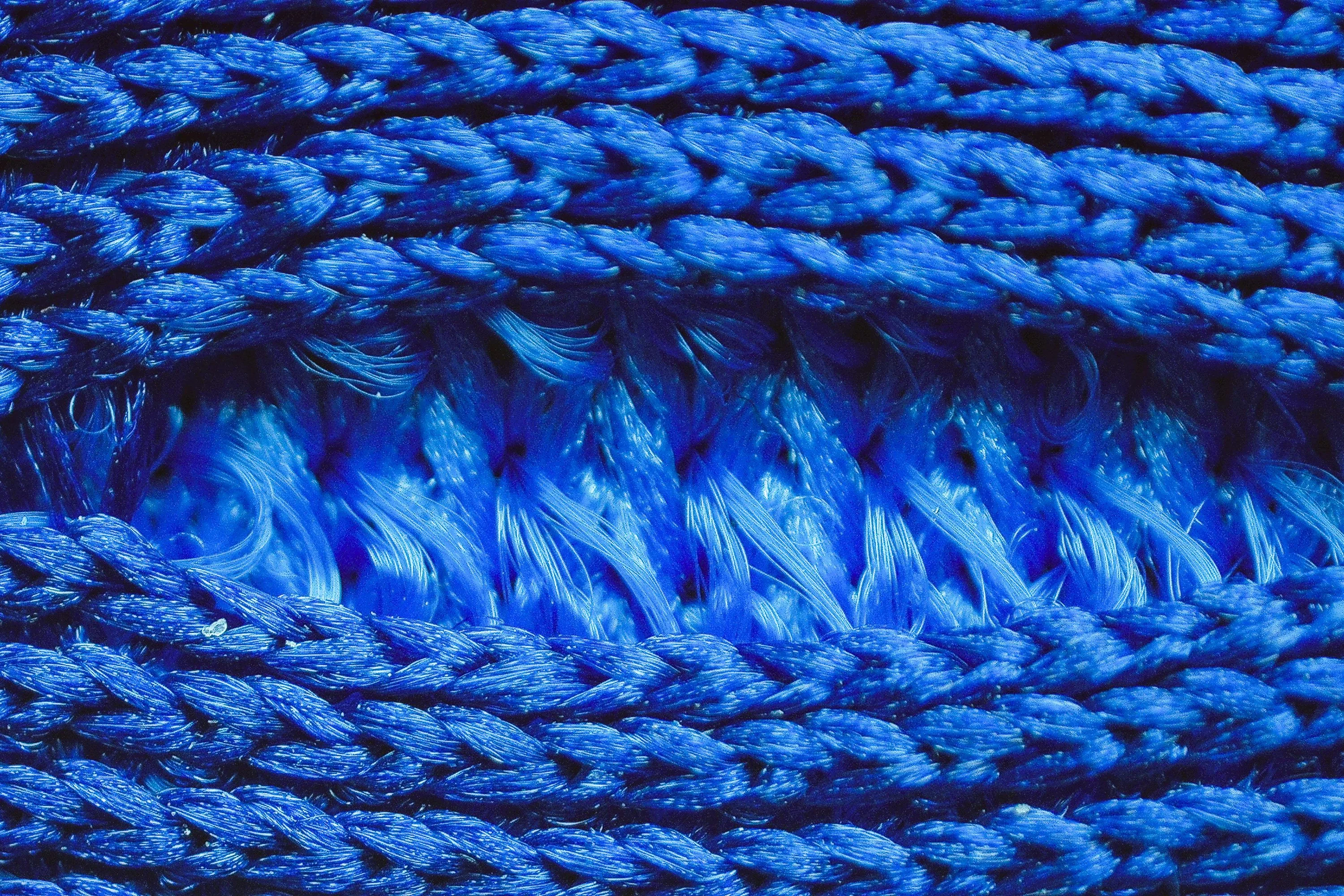

Surprisingly enjoyable
We enjoyed the balanced feel of the Gaviota 4, which is plush but also has some hints of firmness.
Our measurements align with these findings, as the dual-density ProFly midsole scored 28.4 HA on our durometer test. This makes it 52.6% firmer than the ultra-cushioned ASICS Nimbus 25, yet still 23.6% softer than the On Cloudswift.
The ride of this Hoka shoe is super smooth and the heel-to-toe transitions feel seamless. There’s even a subtle energy return, which added some life to this seemingly burly trainer.
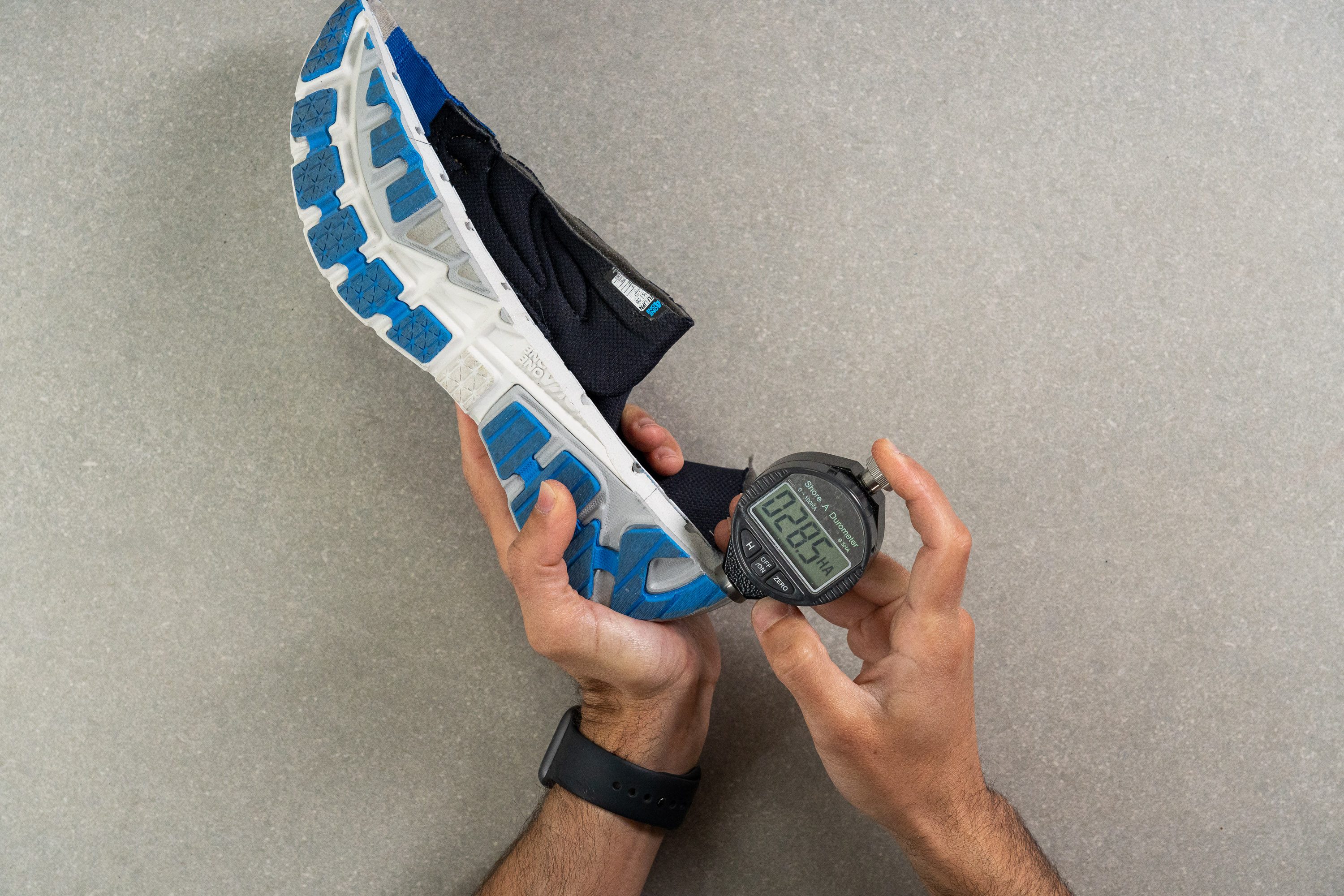
Chilly weather, subpar results
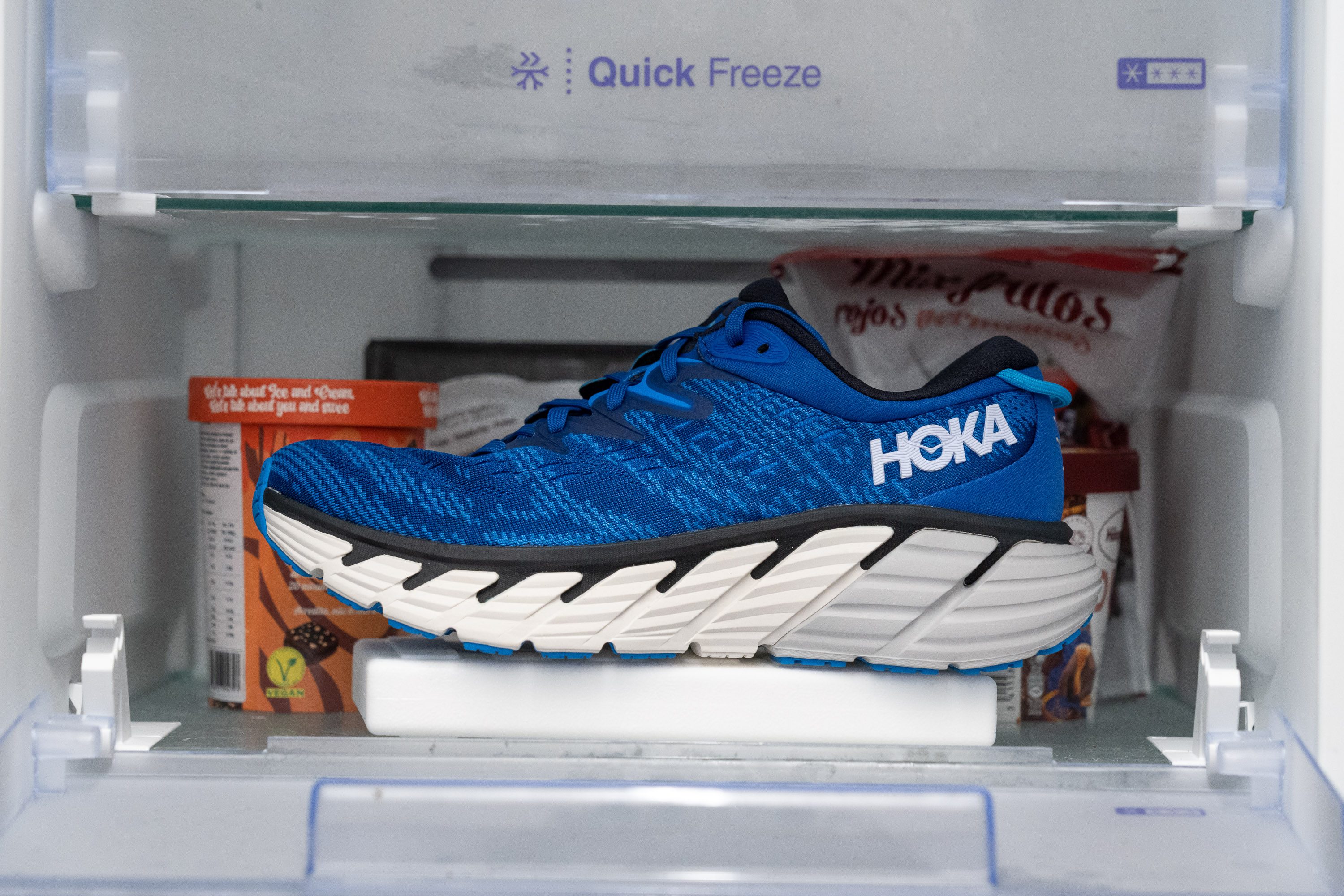
The newest edition of the Gaviota uses an EVA-based foam again. So we expected it to be an even more rigid shoe in cold weather.
Although the shoe's midsole hardens only a bit more than the norm (27.2% vs. 26.9%), the entire shoe becomes noticeably stiff in cold conditions. Our lab tests show a 67.2% increase in stiffness, requiring 68.2 N of force to bend it 90º—significantly more than the average 43.6%.
And for those who run in extremely cold climates, we have an amazing guide on how temperature affects running shoes.
Lasts for a long time
If you are worried about durability, just relax! The shoe's upper is really durable, and because of that, the midsole is highly likely to lose its magic long before the sturdy upper shows any signs of damage. This applies even to those of you who often make big-toe or pinky-toe holes in your shoes.
We compared the Hoka Gaviota 4 (left) with the Hoka Transport (right), a sturdy upper with CORDURA material. We were really surprised, as Gaviota's upper did exceptionally well (3 out of 5) in our standardized Dremel test—which applies exactly the same force and RPM to both shoes for 4 seconds—for being such a high breathability shoe.
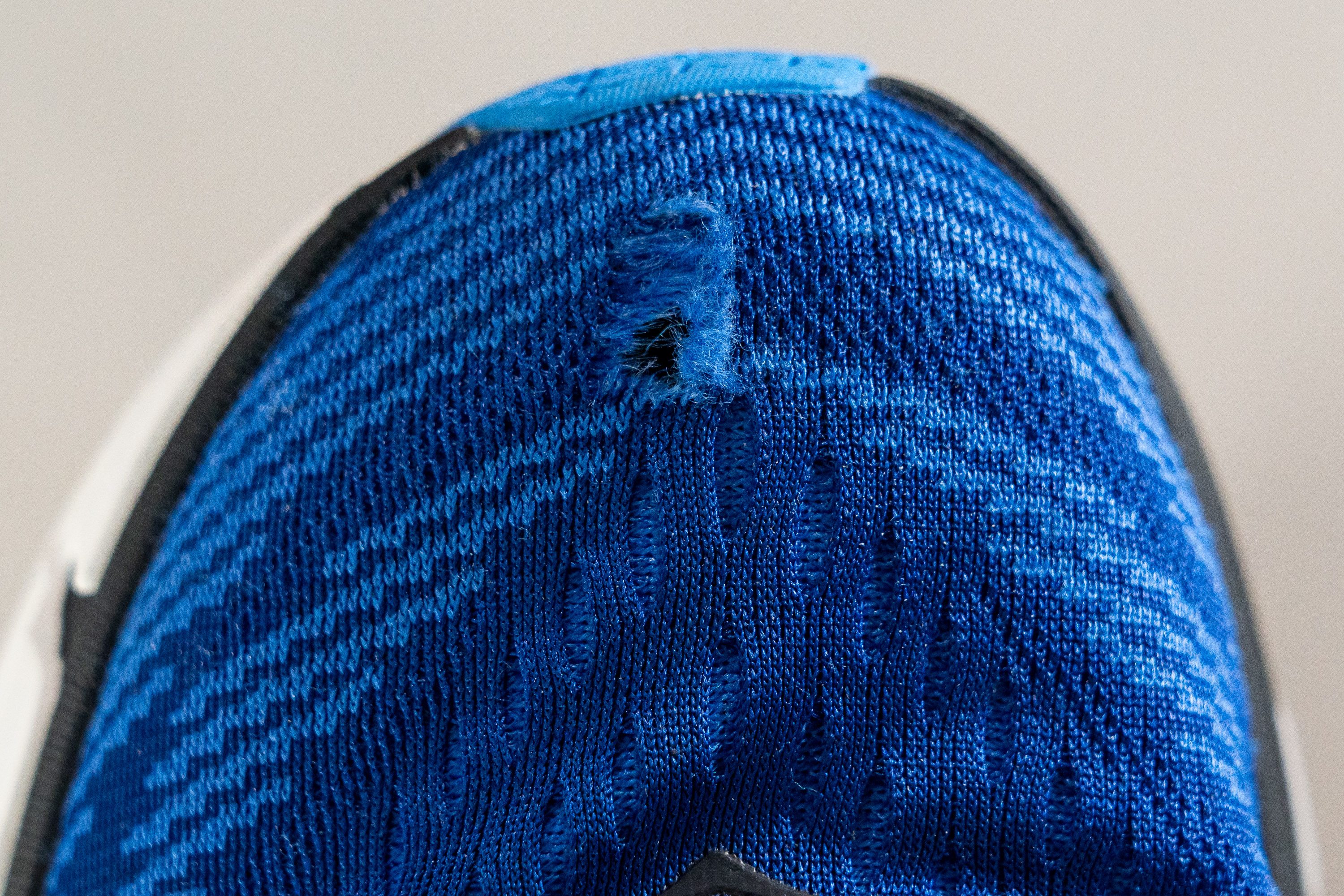
Real comfort
This Hoka shoe feels like heaven on the foot!
Following our lab inspection, we can confidently affirm that this Hoka upper is among the softest we've ever tried. Rest assured, comfort is guaranteed!
Plenty of support in the Gaviota 4, especially for heel strikers
Runners with overpronation can benefit from HOKA’s J-Frame, a denser insert of foam that provides support and guides the foot. This, together with the Gaviota-style wide platform, brings the necessary stability to the whole shoe.
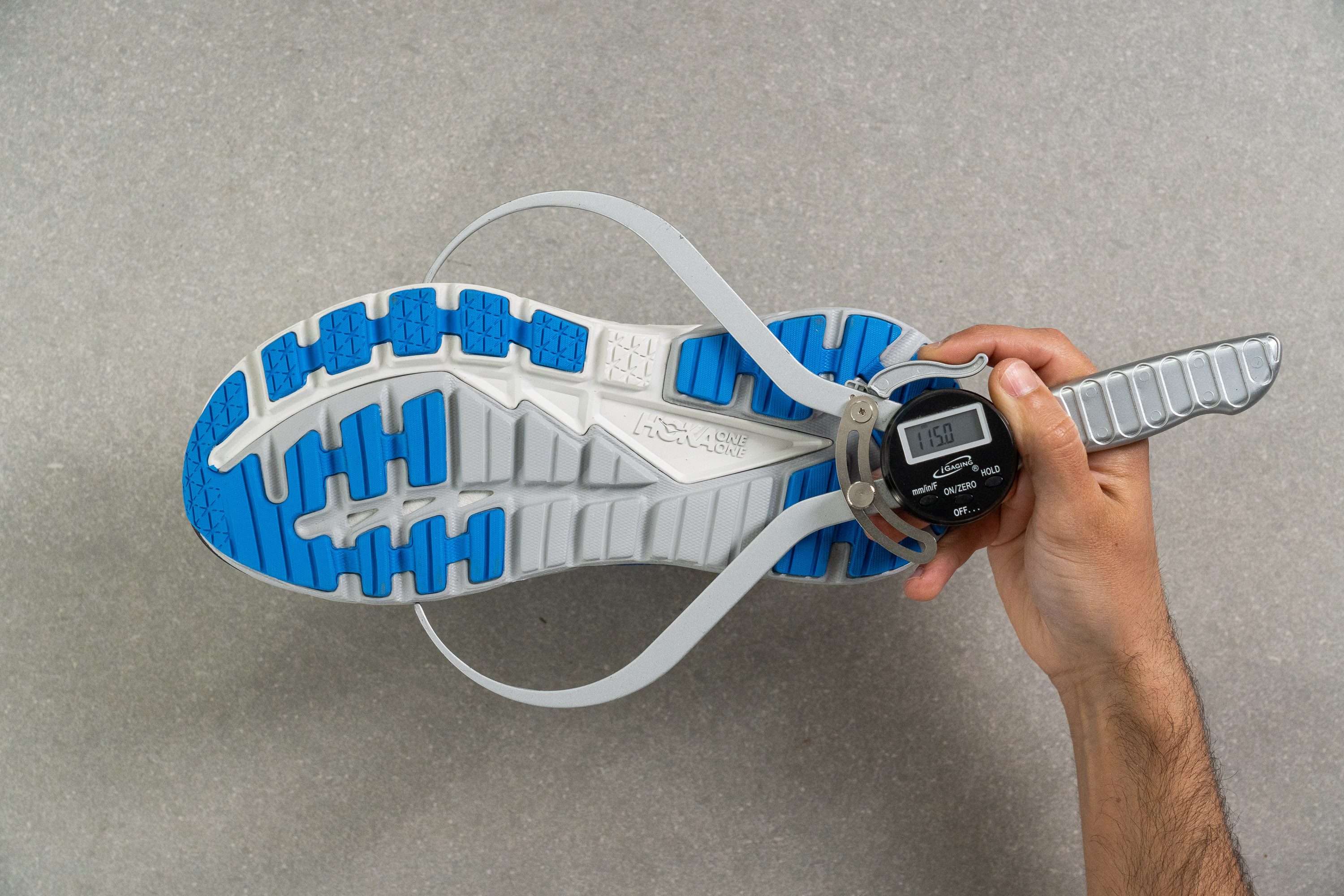
It's hard to think of a better shoe for a heel striker that needs pronation support. We measured the heel of the Gaviota 4 at a mind-boggling 103.0 mm. But, how wide is that? Well, the average shoe is 13.2% narrower, which is a lot!
Despite this shoe's impressively broad platform, it's 2.1% narrower in the forefoot and 2.4% narrower in the heel compared to its predecessor. If you require the widest and most stable platform available, the more-than-likely discounted Gaviota 3 might just be a fantastic choice too.
Yes, it's still a pretty heavy shoe
Even though it doesn’t feel excessively heavy when running, we think that the Gaviota 4 could use some weight decrease. On the scale, it shows 324g and the average for a road running shoe is around 279g, although it's a reasonable weight for a massive 40 mm stack height.
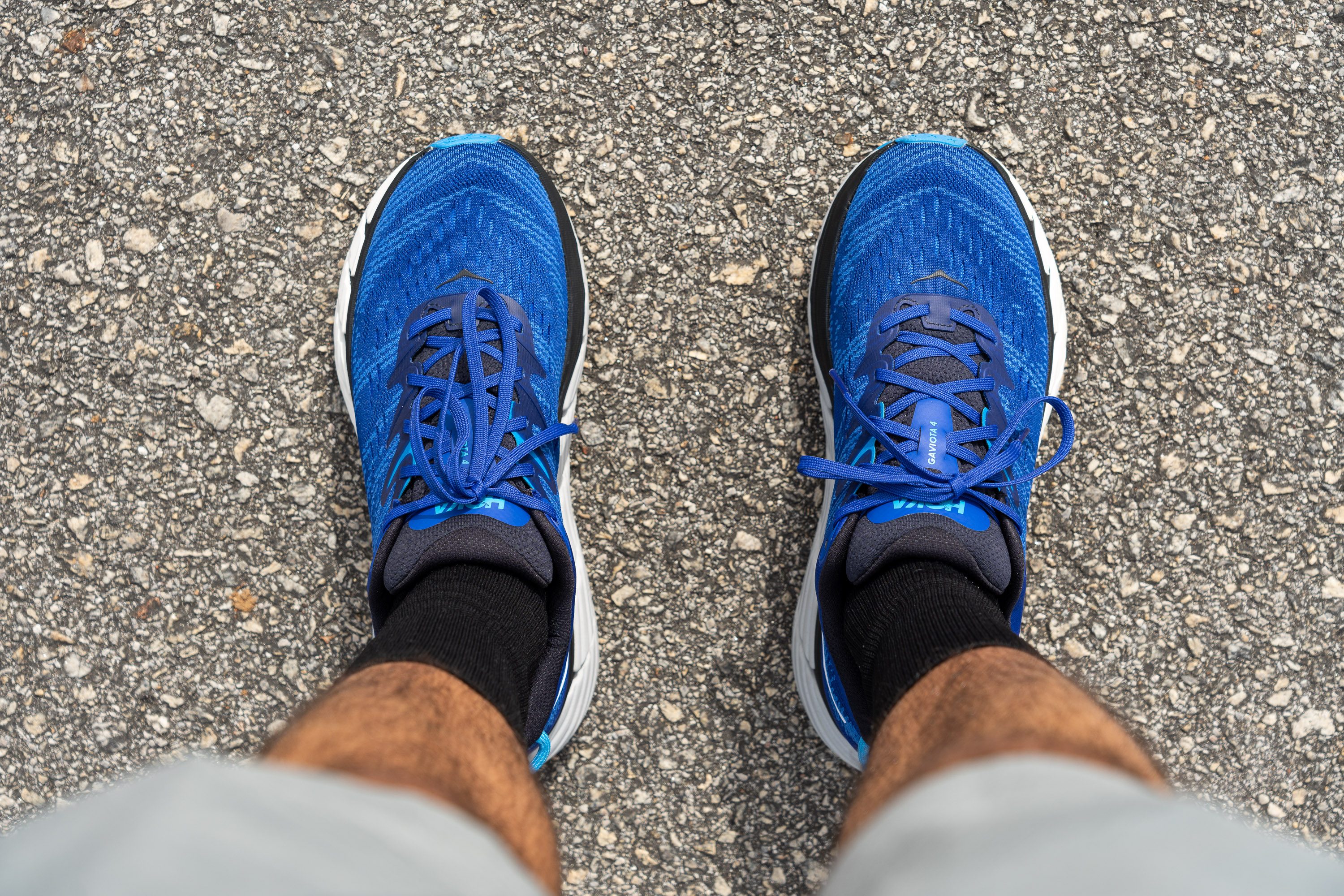
Interestingly, the previous model of this shoe is 2.8% lighter than the current one, which is somewhat unusual these days, as most companies strive to make their shoes lighter—as it's a selling point. However, such a minor change is hardly noticeable, particularly in a well-cushioned daily trainer. So, there's no need to worry!
As a stability shoe, it's not rockered at all, which is good for its purpose. Seems pretty clear when compared to the super-rockered New Balance FuelCell SC Trainer.
A true shield between the foot and the ground
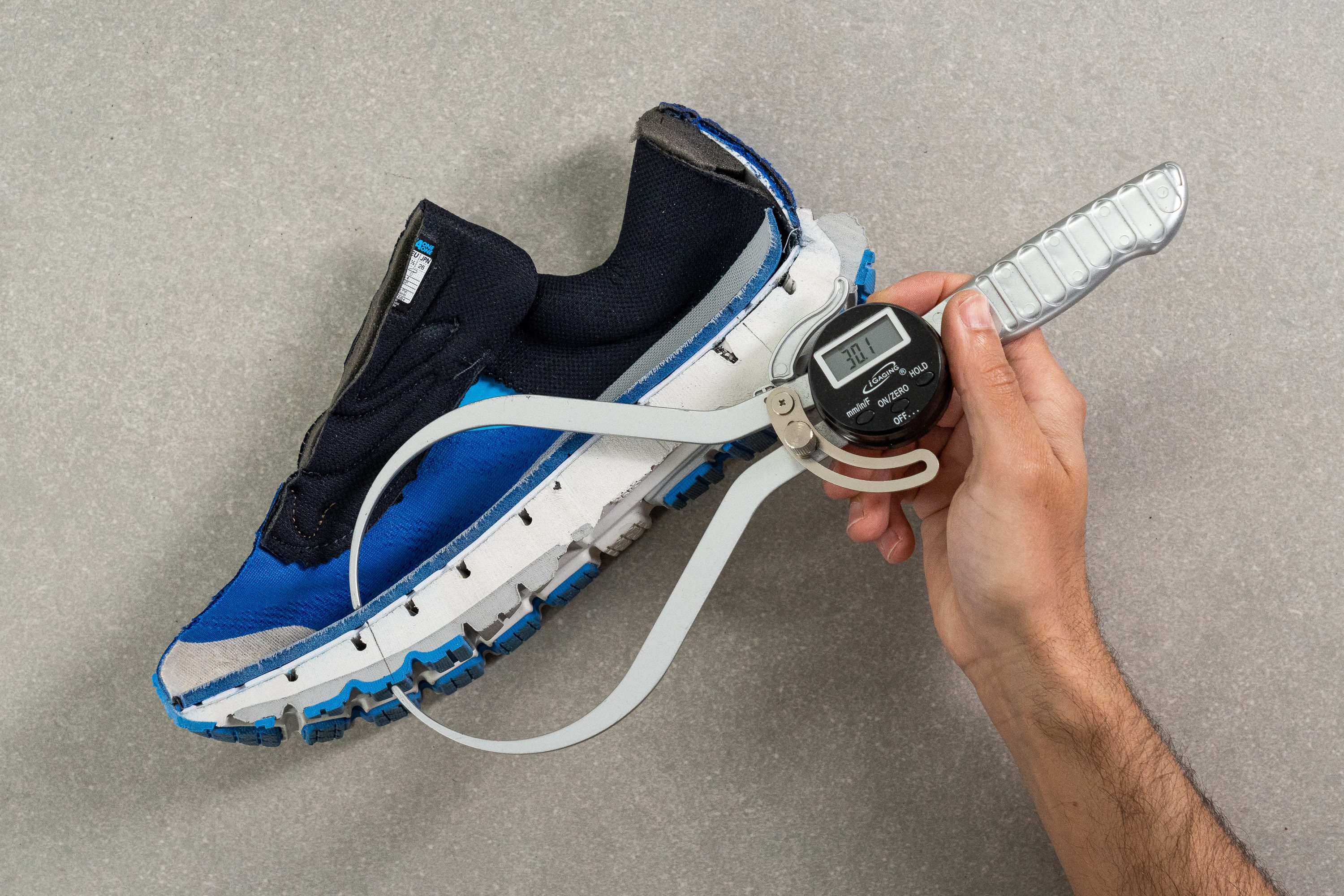
We recorded the shoe's measurements at 36.6 mm in the heel and 30.1 mm in the forefoot, resulting in a 6.5 mm drop.
Interestingly, the official numbers claim a 40mm heel and 35 mm forefoot, amounting to a lower-than-measured 5 mm drop.
It's just another friendly reminder that you can't always rely on what the brand claims...
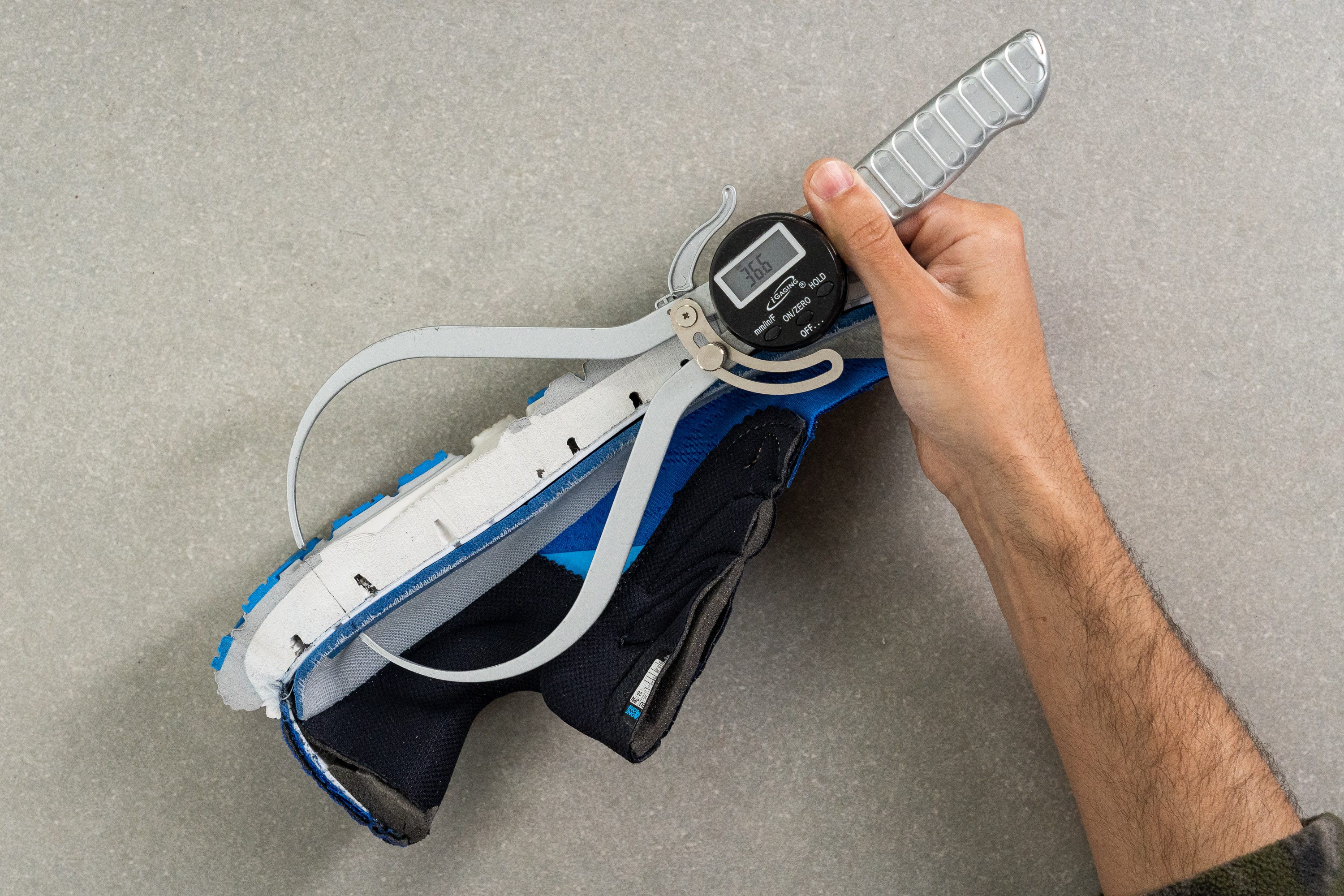
The ground feel is almost completely muted with this shoe, but on the bright side, the impacts are absorbed extremely well.
Gaviota 4 needs just a couple of runs
Keep in mind that this shoe did not feel as soft and flexible on our first run. However, it took only a few miles to get better. The heavier you are, the sooner it will break in, though.
After that break-in period, it's still a stiff shoe, not flexible by any means. We rated it at 4 in both our longitudinal and torsional flexibility test, which is the second-highest score.
When checking the shoe's resistance to bending test, we needed 16.9% more force to bend it to 90º when compared to the average shoe, but it's more or less on par with most shoes from the same stability-oriented segment and, in a incredible coincidence, we needed the same 40.8 N in the Brooks Adrenaline GTS 22.
An outsole that just works
From our experience, the Gaviota 4 provides excellent grip on a wide variety of surfaces.
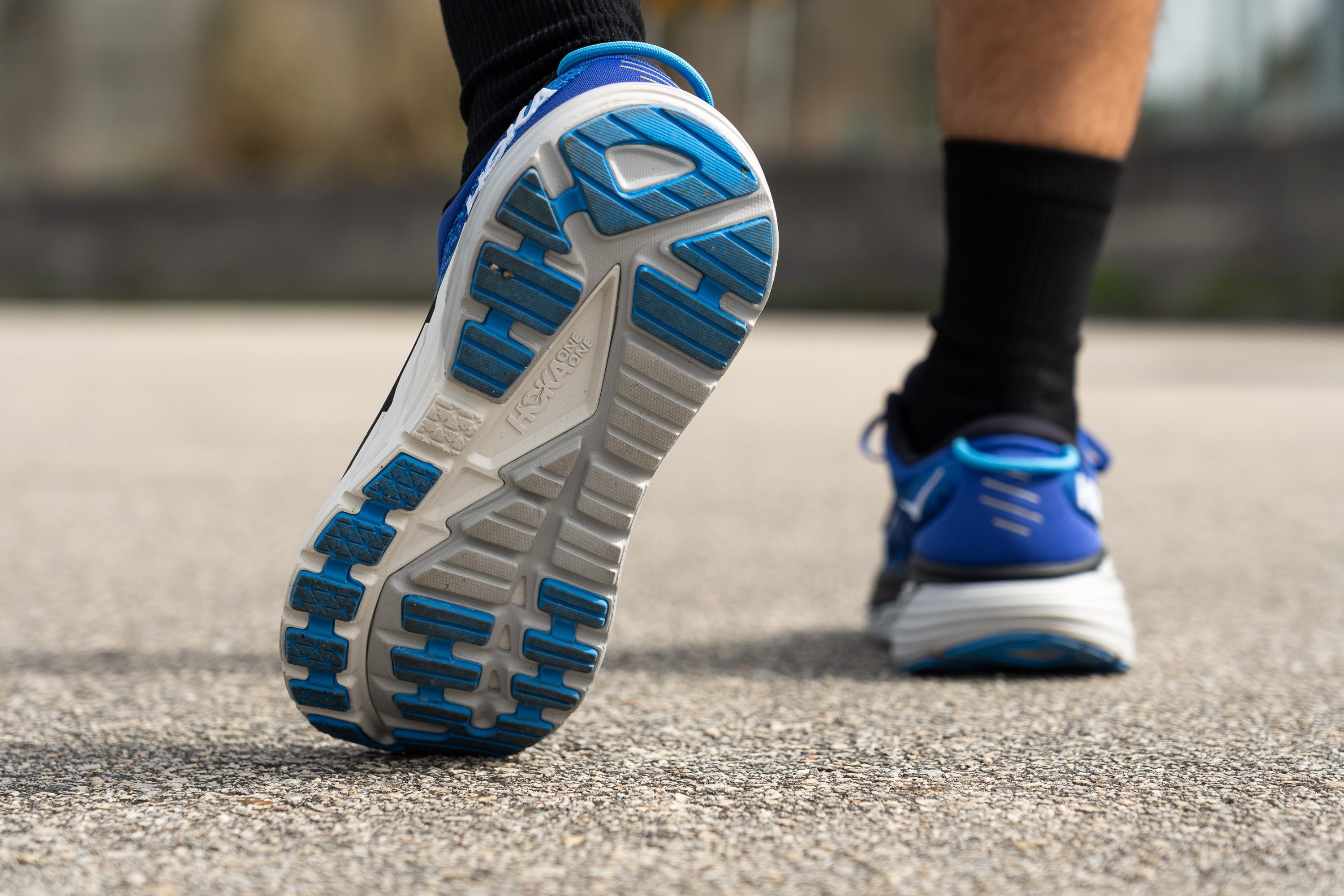
On top of this, the outsole proved to be very durable and we believe that it's meant for hundreds of miles.
Our measurements of the strategically placed rubber in the outsole reveal a jaw-dropping 87.0 HC.
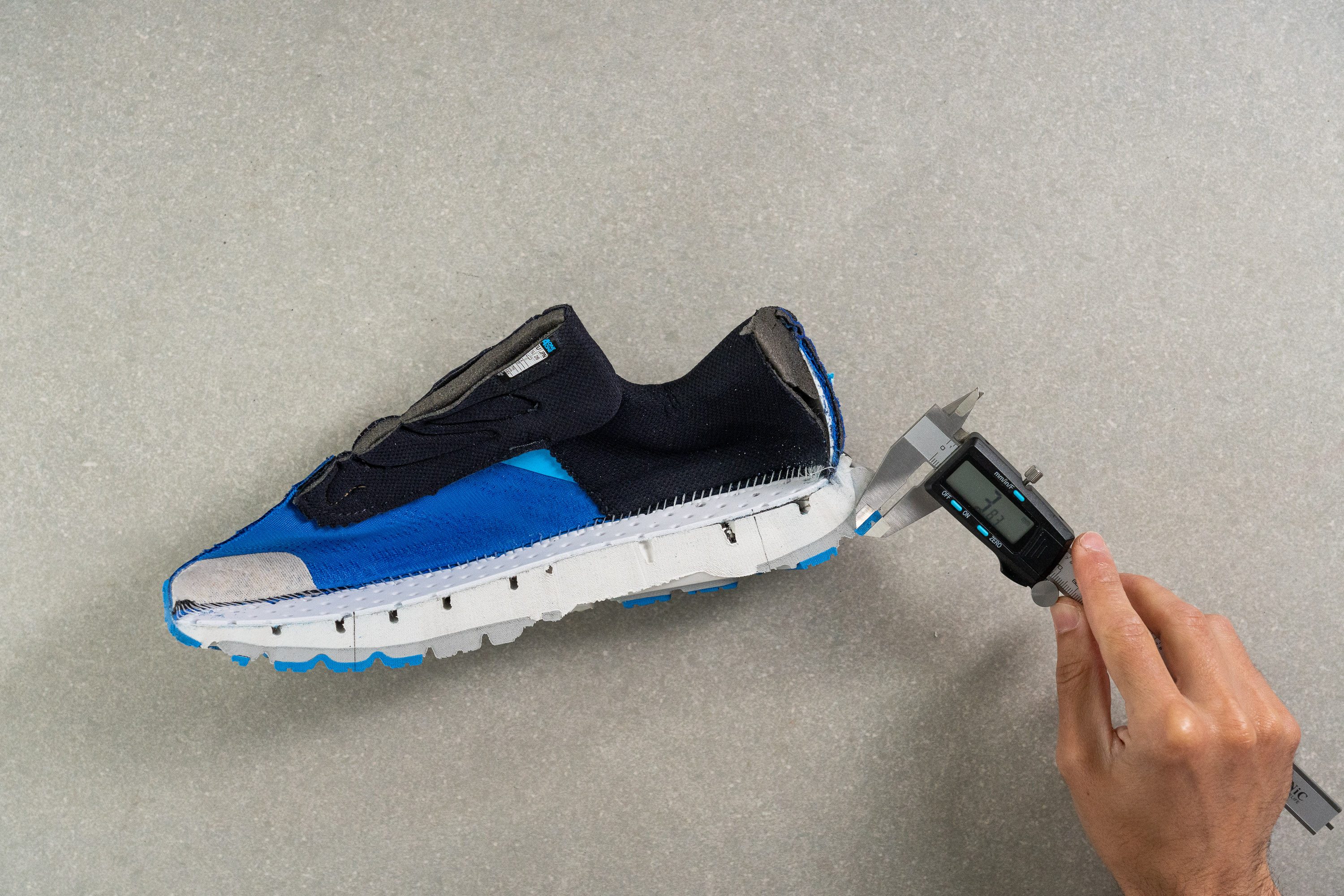
This shoe's rubber outsole is:
- 4.2% harder than the Hoka Gaviota 3;
- 16.2% harder than the Asics GT 2000 11.
- and 8.5% harder than the average shoe!
This is almost always an indication of a longer shelf life!

Thick-and-comfy tongue and heel collar
When you buy a max-cushioned-and-stability shoe you also expect a chunky tongue to protect your feet from lace bite and let you get a perfect lockdown.
Most definitely, you'll get the classic Gaviota feel in your instep with the v4.
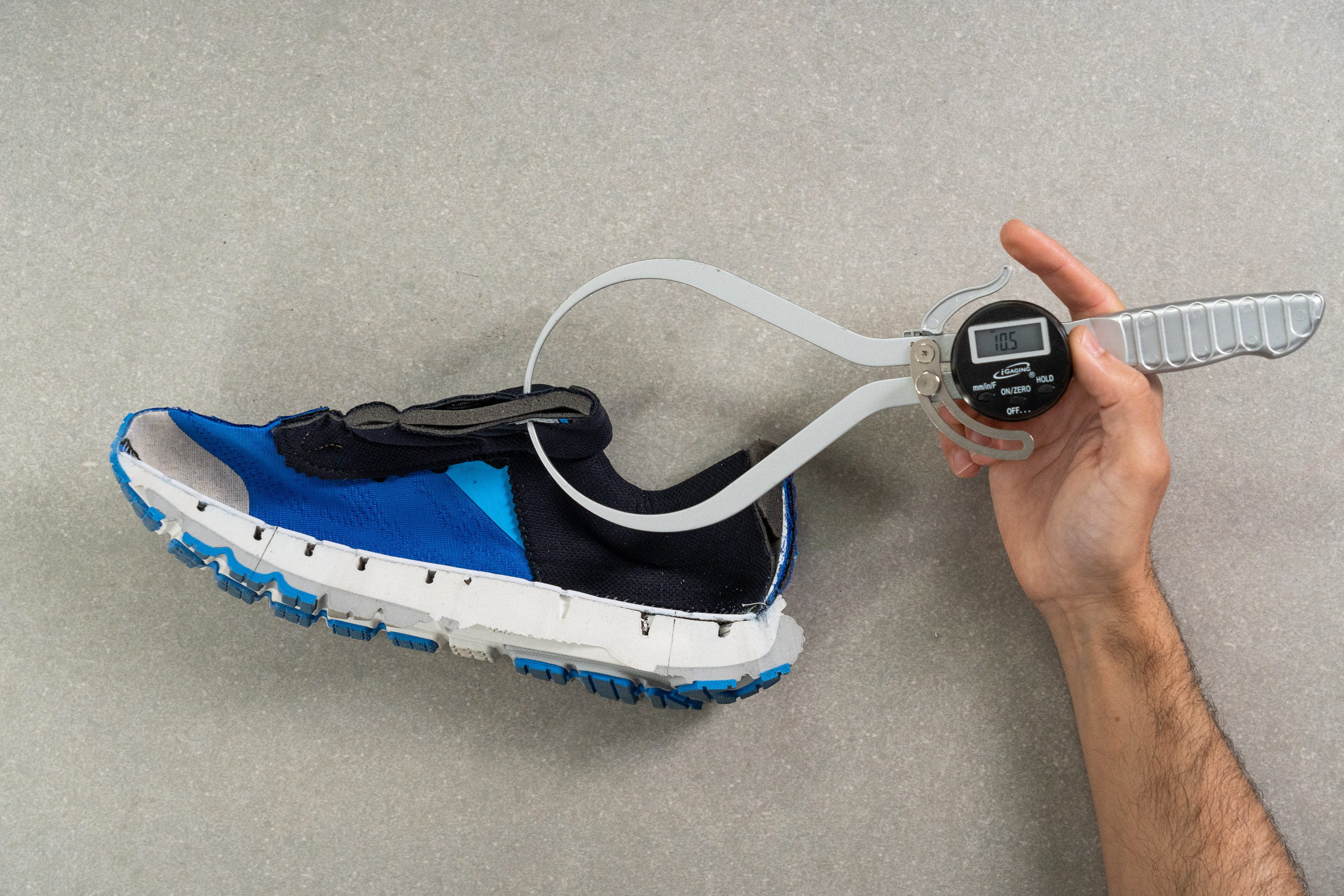
After measuring it with our high-precision caliper, we determined a 10.5 mm, which surpasses the psychological 10mm barrier of the famous UPTC (Ultra Padded Tongue Club).
We can also confirm that the tongue is even thicker than the previous version, although only by a mere 0.2mm. And it's still partially sewed to the upper—which is great for getting a solid lockdown.
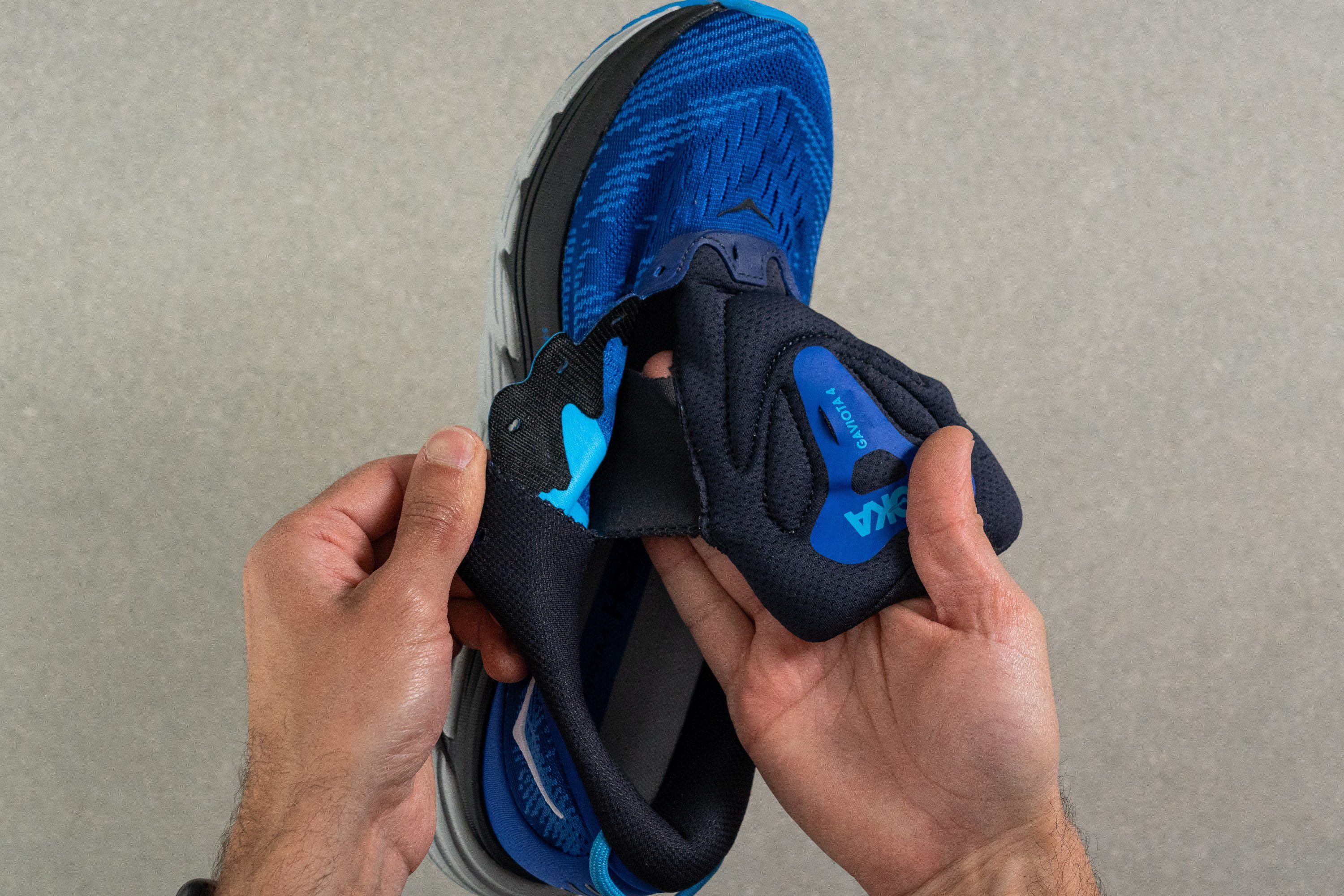
When it comes to the heel collar, this shoe expertly balances stability and motion control without compromising on comfort. The obvious solution involves adding ample padding around the collar while ensuring optimal stiffness to minimize pronation effectively. While not brands opt for this, we applaud that Hoka did.
Hoka-style upper
The Gaviota 4's fit is consistent with the traditional Hoka design for daily trainers and max-cushioned running shoes.
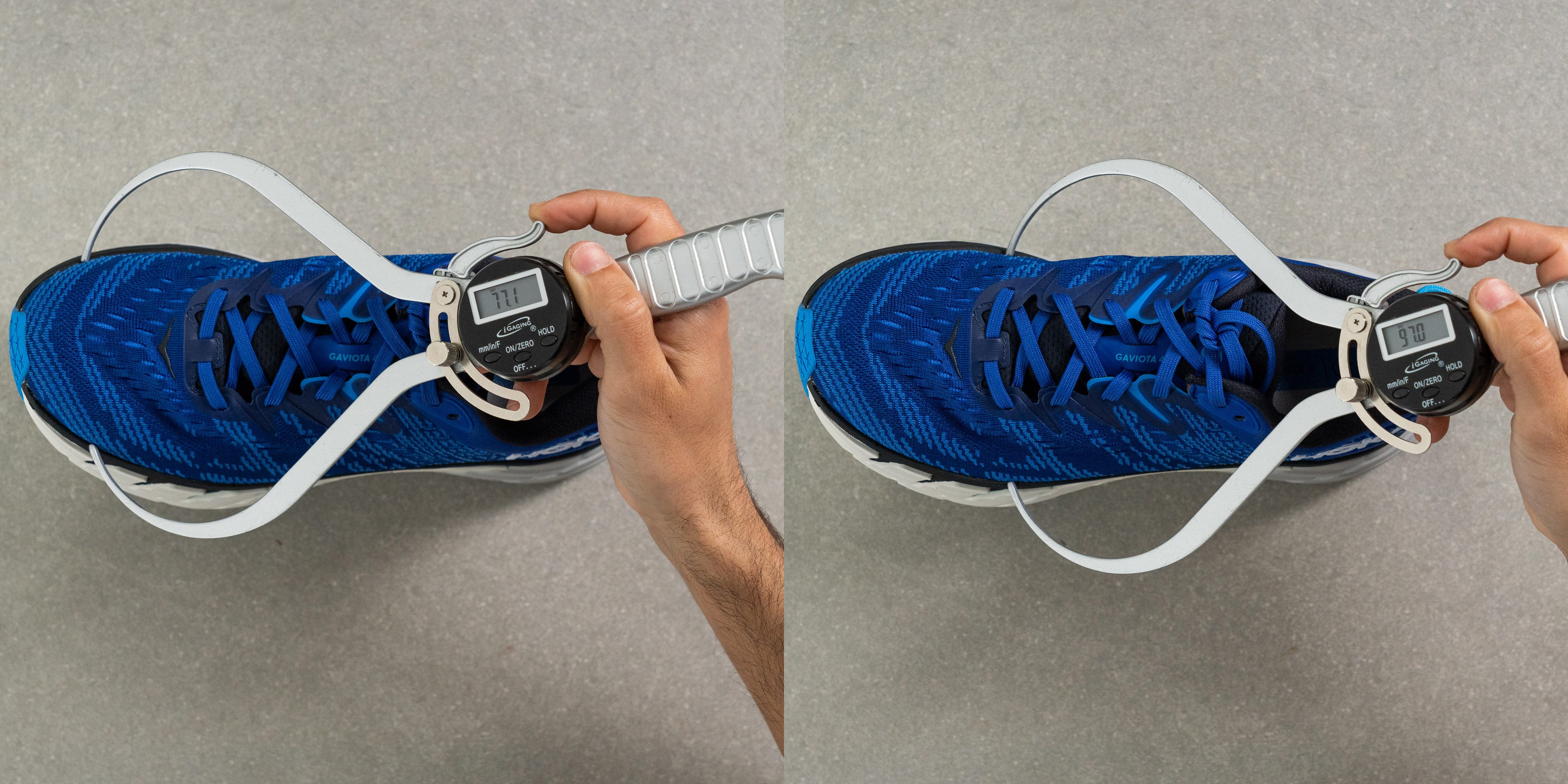
The shoe's upper measures 97.0 mm at its widest part and 77.1 mm at the big toe, resulting in a 25.8% decrease between the two measurements. This is relatively narrow for a maximum comfort shoe.
For reference, the stability-focused Brooks Adrenaline GTS 22 has a 5% roomier upper. If you require extra space, consider opting for the available wide size to ensure a comfortable fit, especially for the longest runs.
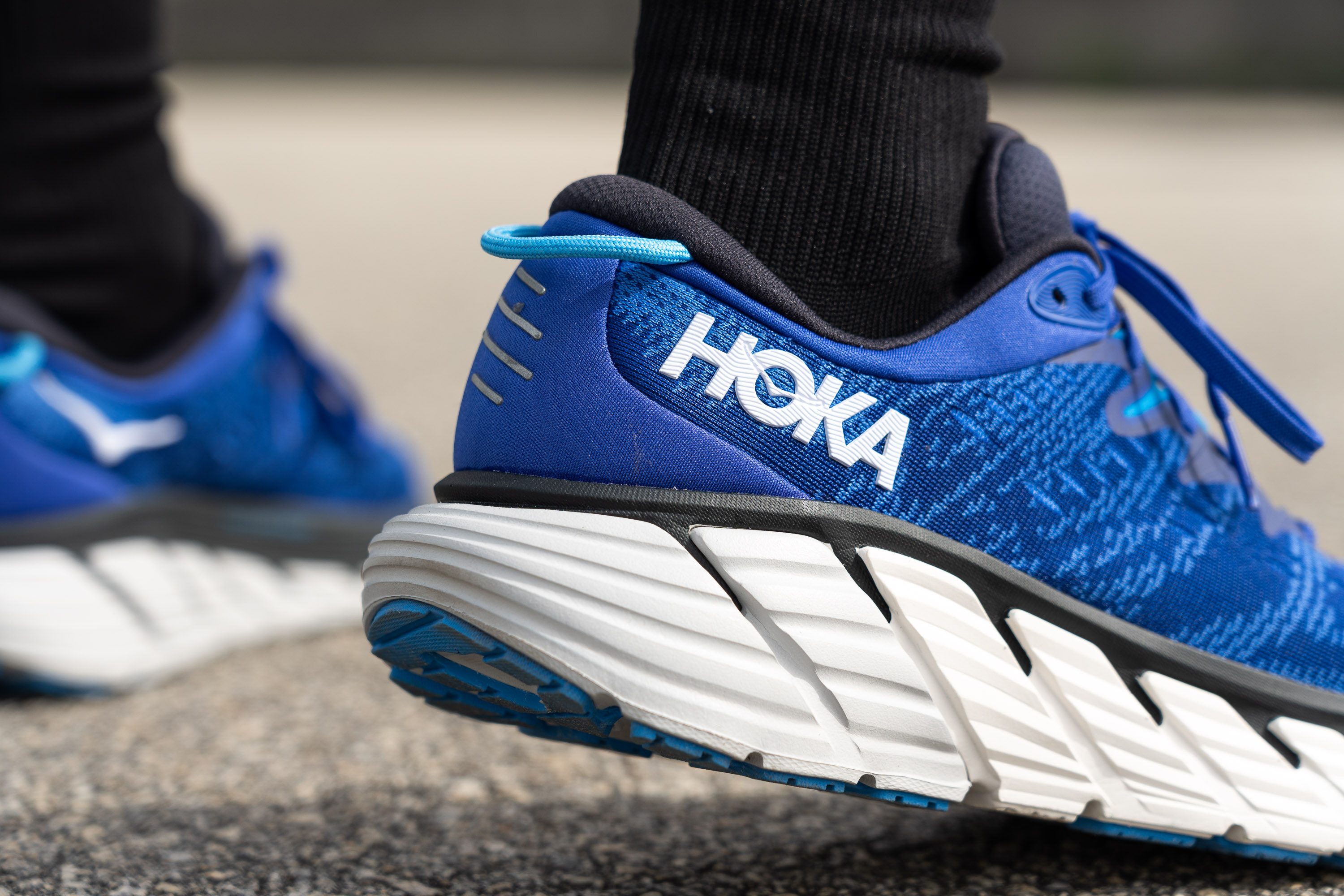
The Gaviota 4 is simple to slip into, with most critics raving about its ease. We verified that in our lab tests, and it's important to credit the ingenious looped finger pull-tab as a big factor in that.
Nice flat laces in the Gaviota 4
The so-called H-Frame is not something new in Hoka shoes, yet it continues to be effective.
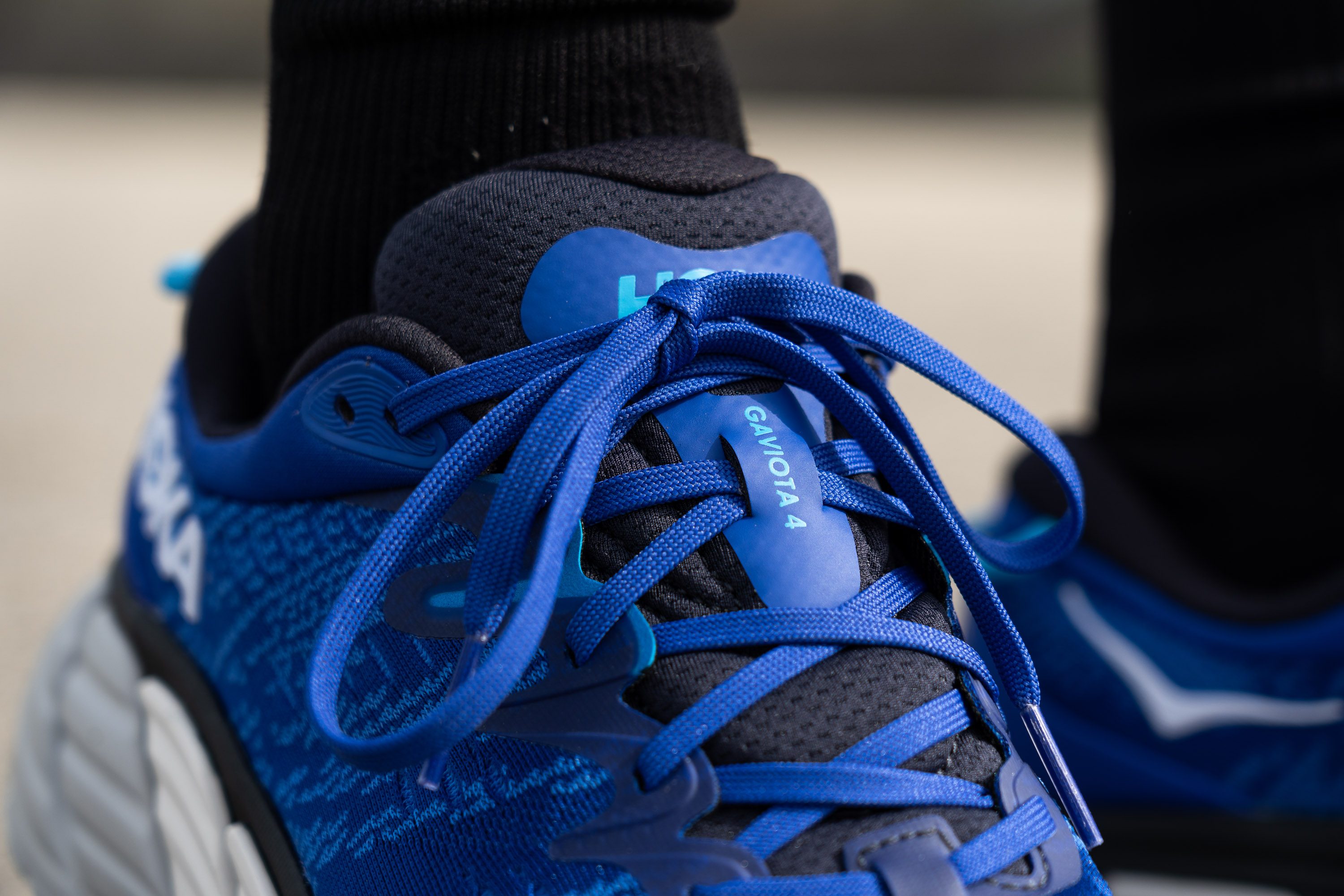
Also, you get a nice pair of flat-and-thin laces with enough length to use the extra eyelet in case you need to make an alternative knot.
Not for the budget-minded
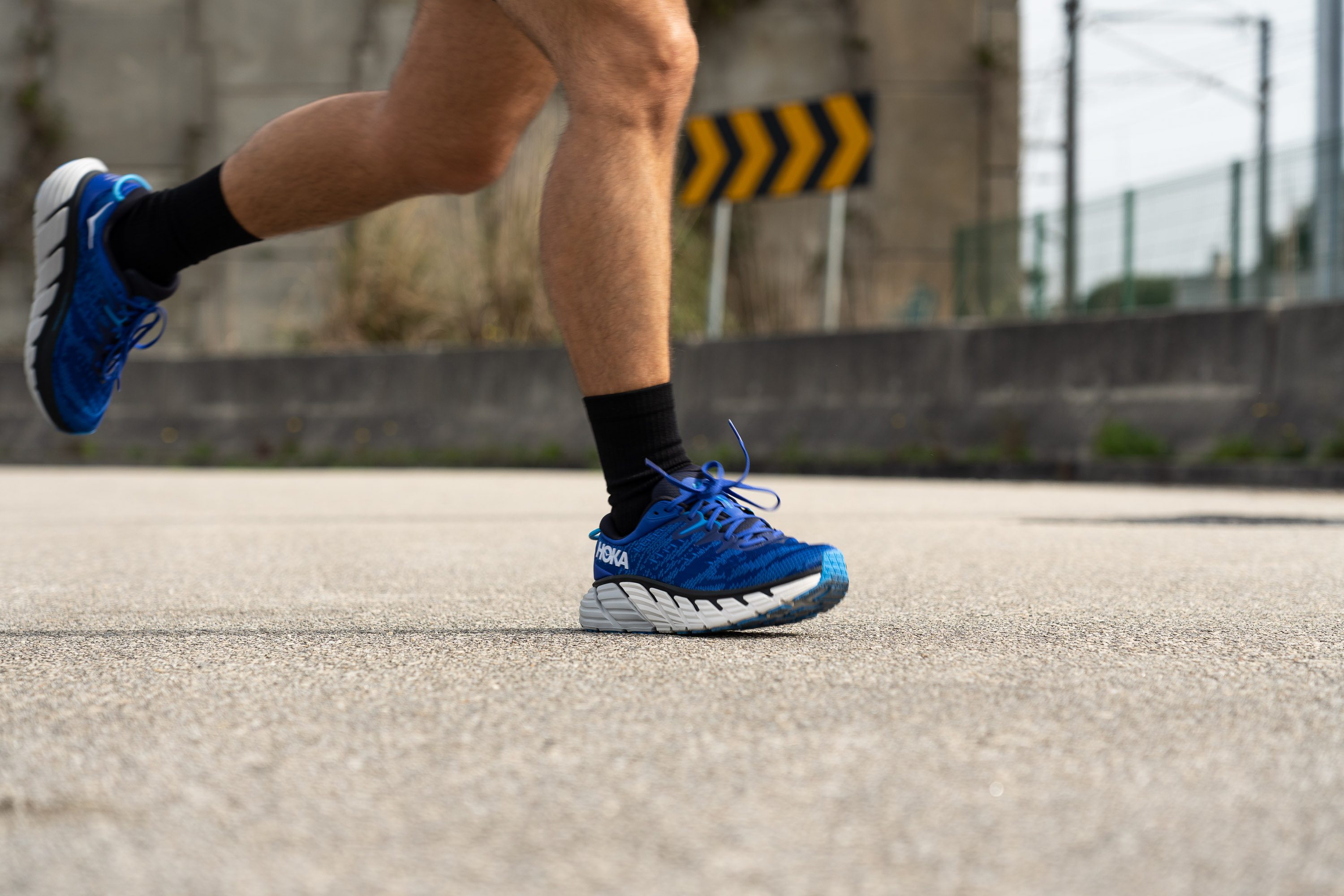
Compared to the average price for a running shoe ($130) the Gaviota 4 is a little bit expensive, given that it costs $170. But of course, this is not an average shoe.
